Have you ever dreamed of setting foot in mystical lands where endless sand dunes stretch under the radiant sun, and feeling the tranquility of the vast desert? Gansu and Xinjiang, two regions in Northwest China, are ideal destinations to make that dream a reality. These places are not only famous for their long-standing cultural and historical heritage but also boast magnificent natural beauty, especially the immense deserts where you can experience the exciting feeling of riding camels and exploring lush “oases” in the heart of the scorching sand.
Gansu Province: Starting Your Desert Exploration Journey
Gansu, a province located in Northwest China bordering Mongolia, is one of the most attractive destinations on the legendary Silk Road. It is not only an important trading gateway in history but also a treasure trove of unique culture and natural landscapes. With a population of about 26 million people, mainly Hui people, Gansu carries a distinctive cultural blend, reflected in its architecture, cuisine, and customs.
A journey to explore Gansu usually lasts about 10 days, enough for you to fully admire the diverse beauty of this land. From the rows of golden poplars lining the roads, like soft silk ribbons across the grasslands, to ancient Buddhist architectural works such as Mati Temple, everything creates a magnificent landscape painting that will amaze anyone who sets foot here.
Mati Temple – The Mysterious Buddhist Temple
Mati Temple, also known as Horse Hoof Temple (Masiti Temple), is one of the most important and unique Buddhist relics in China. This temple is built in natural caves on the cliffs of red sandstone mountains, creating an architectural masterpiece that blends nature and human hands. It is not only a sacred religious site but also an attractive cultural and historical destination, attracting visitors with its ancient beauty and tranquil atmosphere.
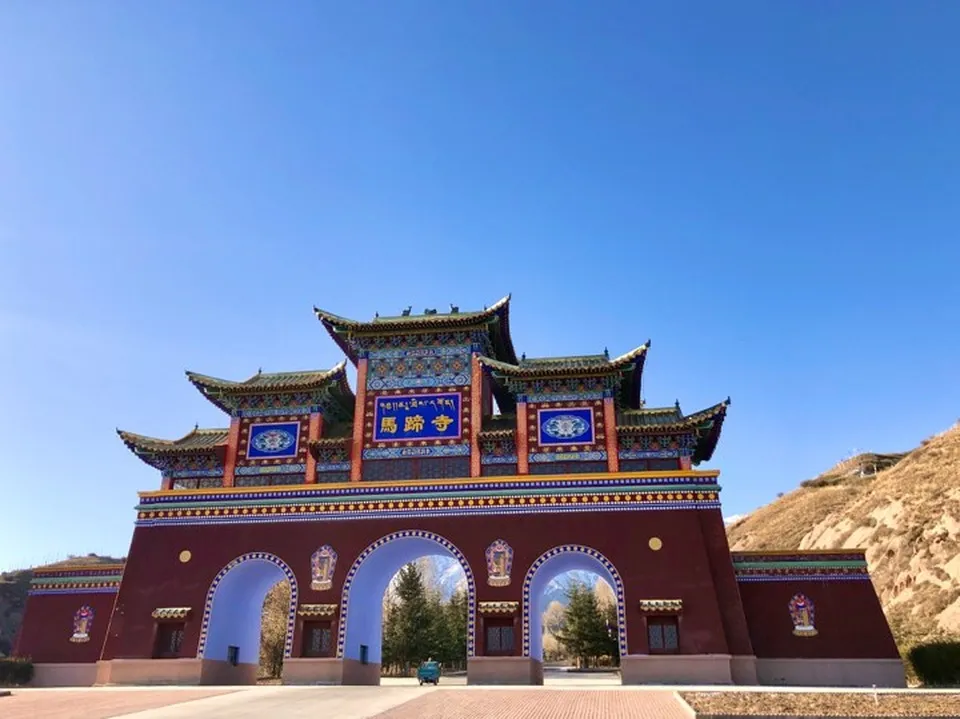
To explore Mati Temple, you will need to climb steep stone steps, weaving through narrow corridors carved into the mountainside. The feeling of excitement and thrill when overcoming these challenges will be well rewarded when you admire the ancient Buddha statues, exquisite carvings, and the sacred space of the temple.
Zhangye Danxia National Geological Park – Rainbow Painting on the Rocky Mountains
Zhangye Danxia National Geological Park, located in Zhangye City, Gansu Province, is a unique natural wonder, likened to a “rainbow across the mountains.” The mountains here carry vibrant colors, from red, orange, yellow to green, creating a spectacular landscape painting that amazes visitors with the miraculous beauty of creation.
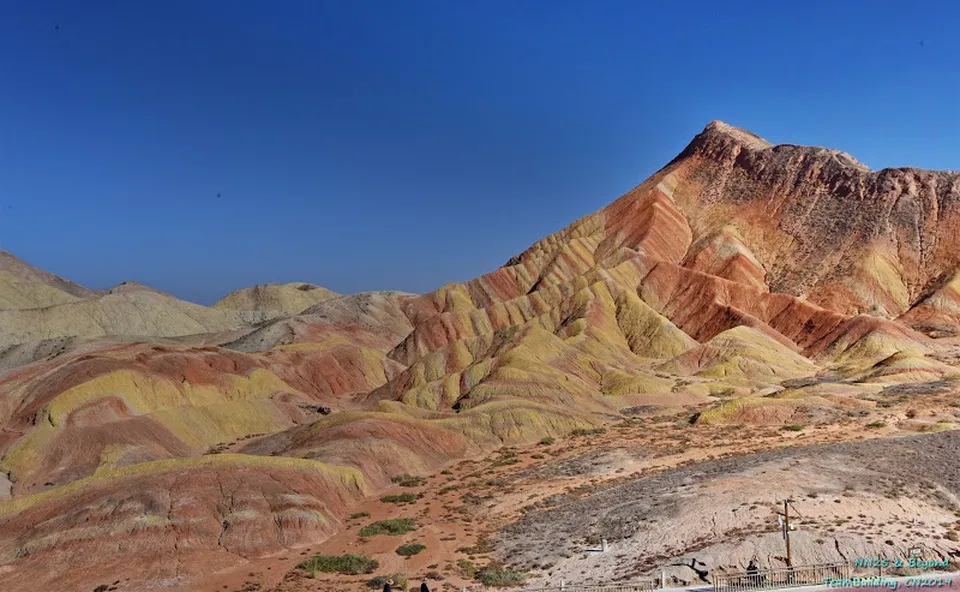
These color patches are formed from the combination of many layers of red sandstone and sediment, undergoing geological changes that lasted more than 24 million years. To explore Danxia Park, you can use the park management’s bus, moving through 4 scenic spots arranged in increasing order of beauty throughout the day. The best time to admire the beauty of the rainbow mountains is in the afternoon when the sunlight shines obliquely, highlighting the vibrant colors on the mountain ranges.
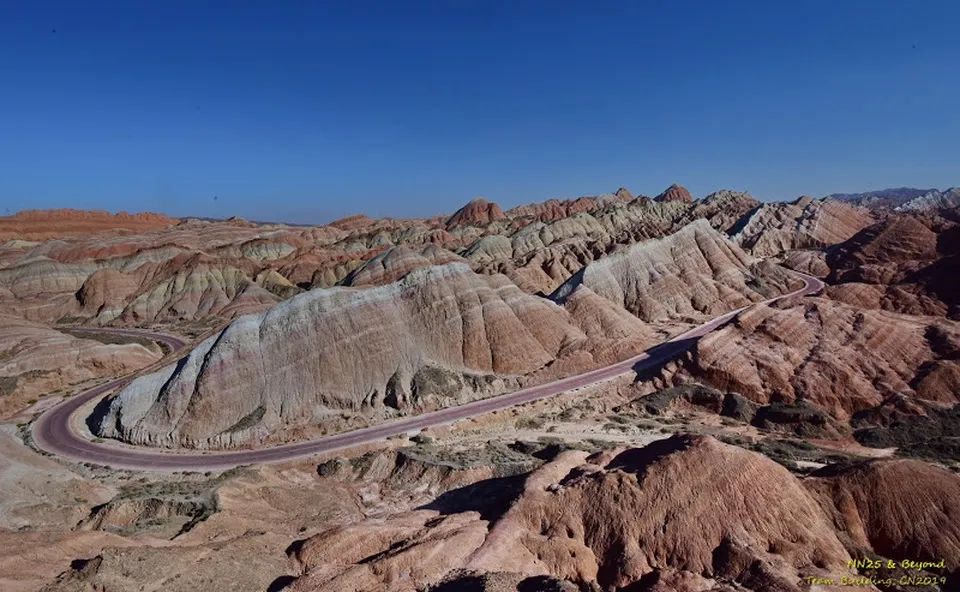
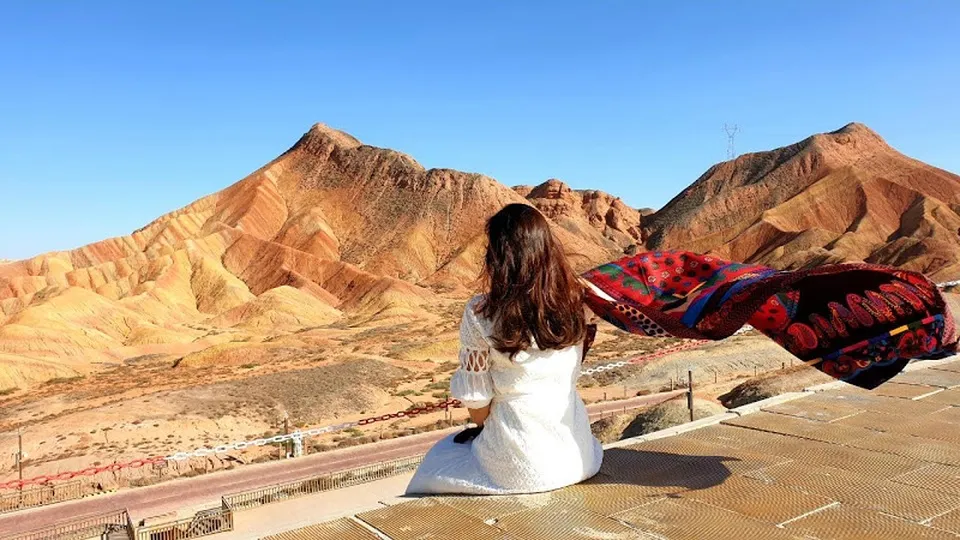
Jiayuguan Fort – The Majestic Pass of the Great Wall
Jiayuguan is a pass located at the westernmost point of the Great Wall, a magnificent architectural work of humanity. This pass was built in a wild border area, adjacent to the Gobi Desert, playing an important role in protecting the border and controlling trade on the Silk Road. Coming to Jiayuguan, you will not only admire the majestic beauty of the ancient structure but also learn about the history and culture of ancient China.
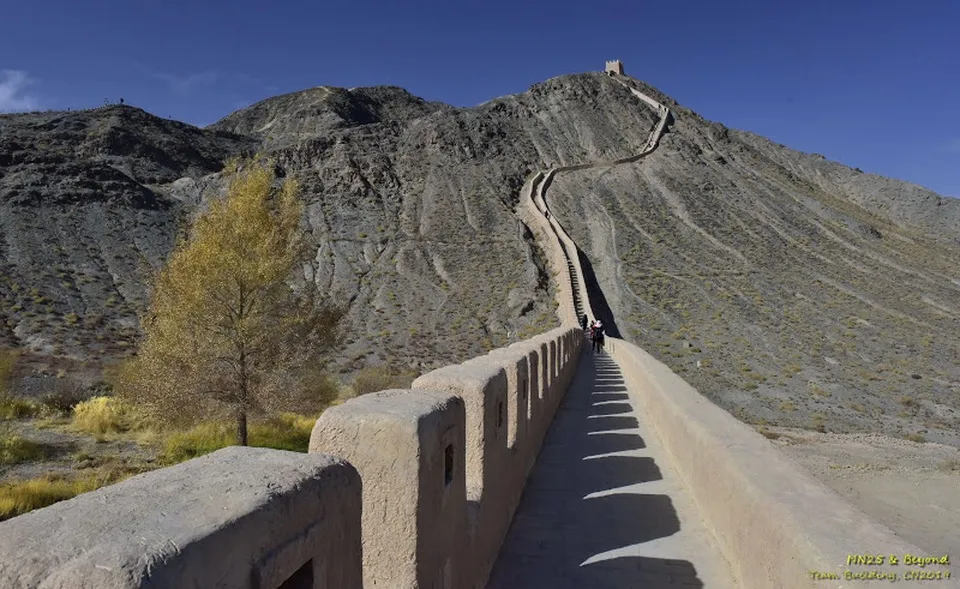
With its strategic location in the Gobi Desert, Jiayuguan was once an important stop on the Silk Road, connecting China with Western and Central Asian countries. Today, it has become a famous tourist destination, attracting visitors with its historical, cultural beauty, and unique desert landscape.
Dunhuang – “Pearl” in the Gobi Desert and Camel Riding Experience
Leaving Jiayuguan, the next journey will take you to Dunhuang, a beautiful oasis city nestled in the vast Gobi Desert. Dunhuang is not only the starting point of the legendary Silk Road but also a famous cultural, artistic, and tourist center. Coming to Dunhuang, you will explore ancient historical sites, admire the miraculous natural beauty, and especially experience camel riding in the sand desert.
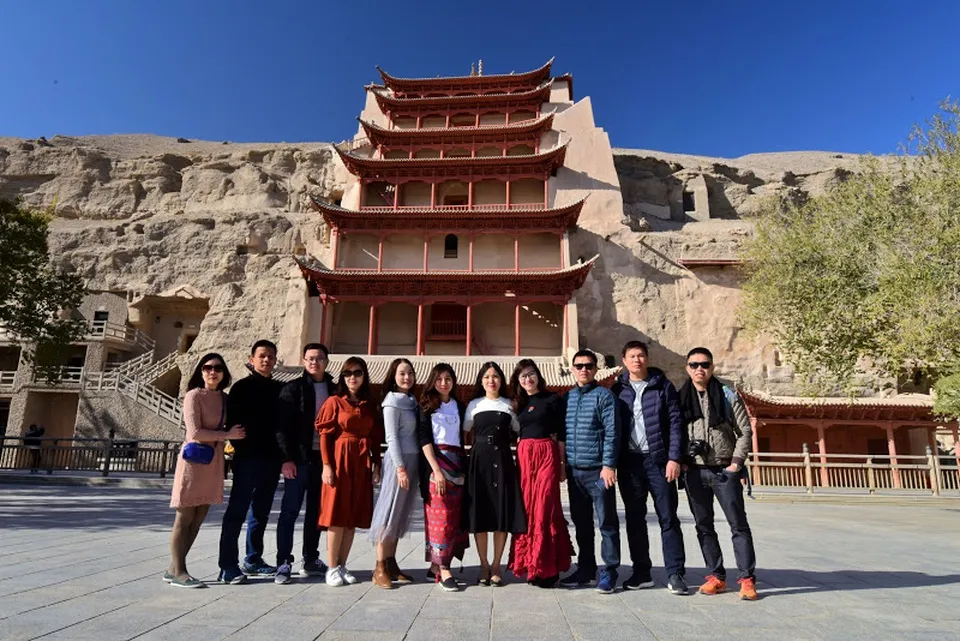
Crescent Lake – Lush Oasis in the Desert
Crescent Lake, a crescent-shaped freshwater lake located amidst the sand dunes of the Mingsha Desert, is known as the “oasis in the desert”. It is not only a unique natural landscape but also a symbol of the resilient vitality in the harsh conditions of the desert. Coming to Crescent Lake, you will enjoy the green, peaceful space and participate in many exciting tourist activities, among which you cannot miss the experience of riding camels on the sand.
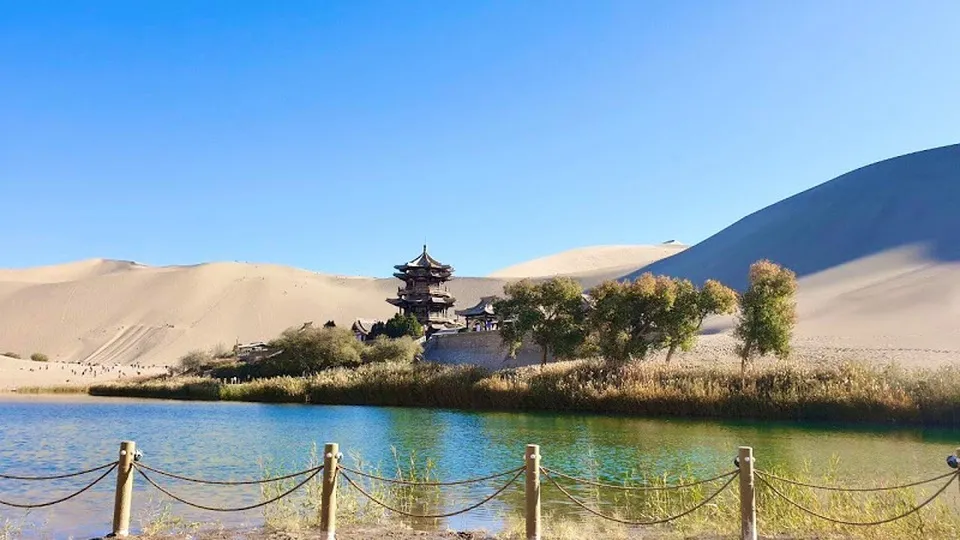
Camel Riding Experience – “Merchants” on the Silk Road
Riding camels in the Mingsha Desert is an unmissable experience when visiting Dunhuang. Sitting on the back of camels slowly walking on the soft sand dunes, you will feel like you are transforming into merchants on the ancient Silk Road, exploring new lands and experiencing the exciting nomadic life.
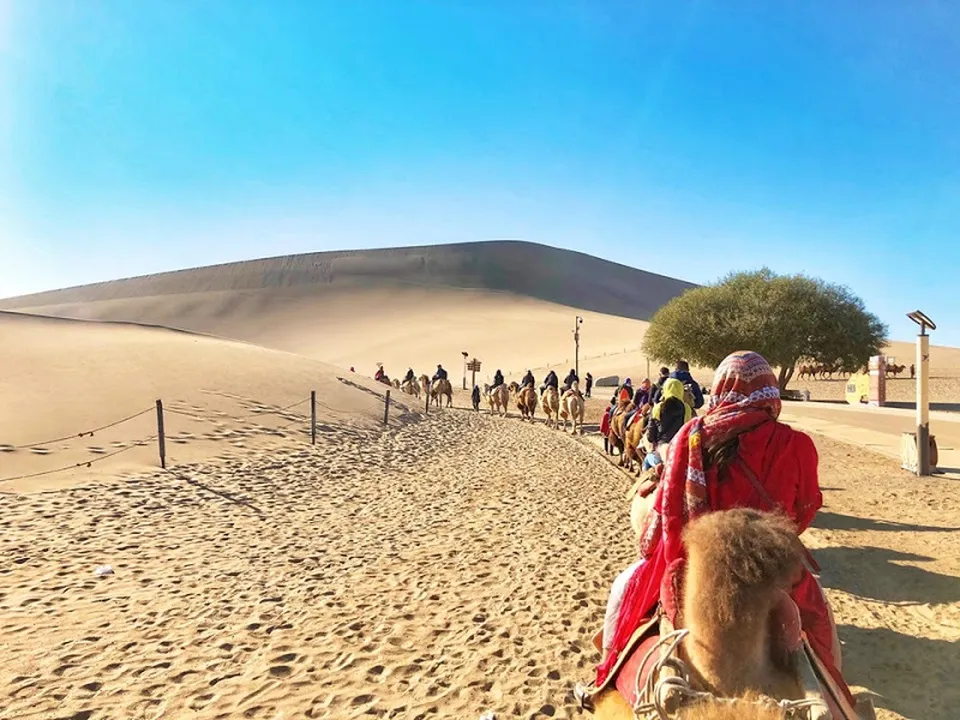
The cost for a camel ride is about 100 yuan (about $15 USD), and you can hire a camel leader to take photos for an additional 20 yuan. If you want a more thrilling experience, you can try riding a motorcycle on the sand dunes for about 120 yuan. Whatever option you choose, you will have memorable moments and beautiful “virtual living” photos amidst the vast desert scenery.
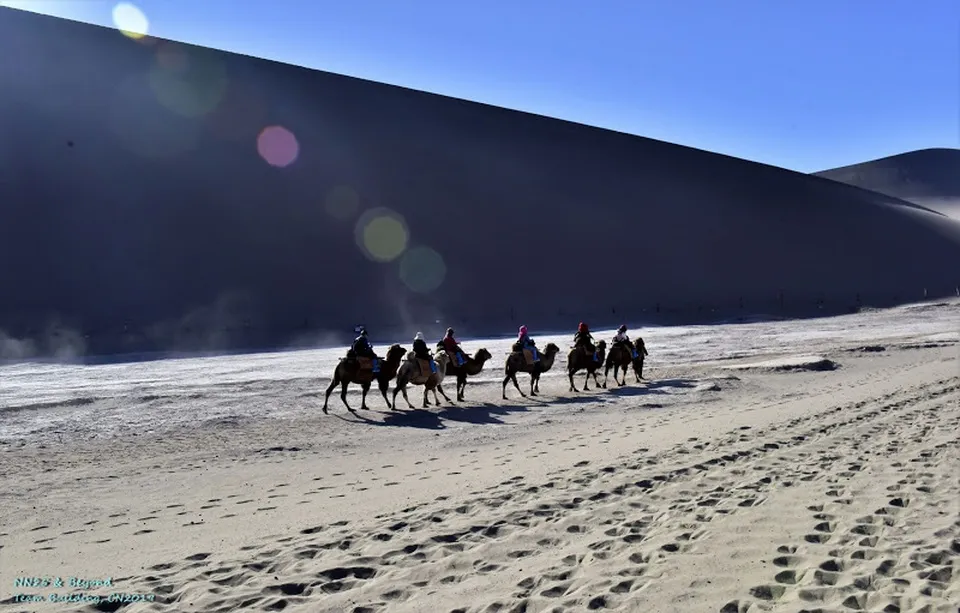
In addition to the camel riding experience, you can also stroll on the wooden path running along the reed field sparkling in the sunlight, enjoying the peaceful atmosphere and poetic beauty of the Crescent Lake oasis.
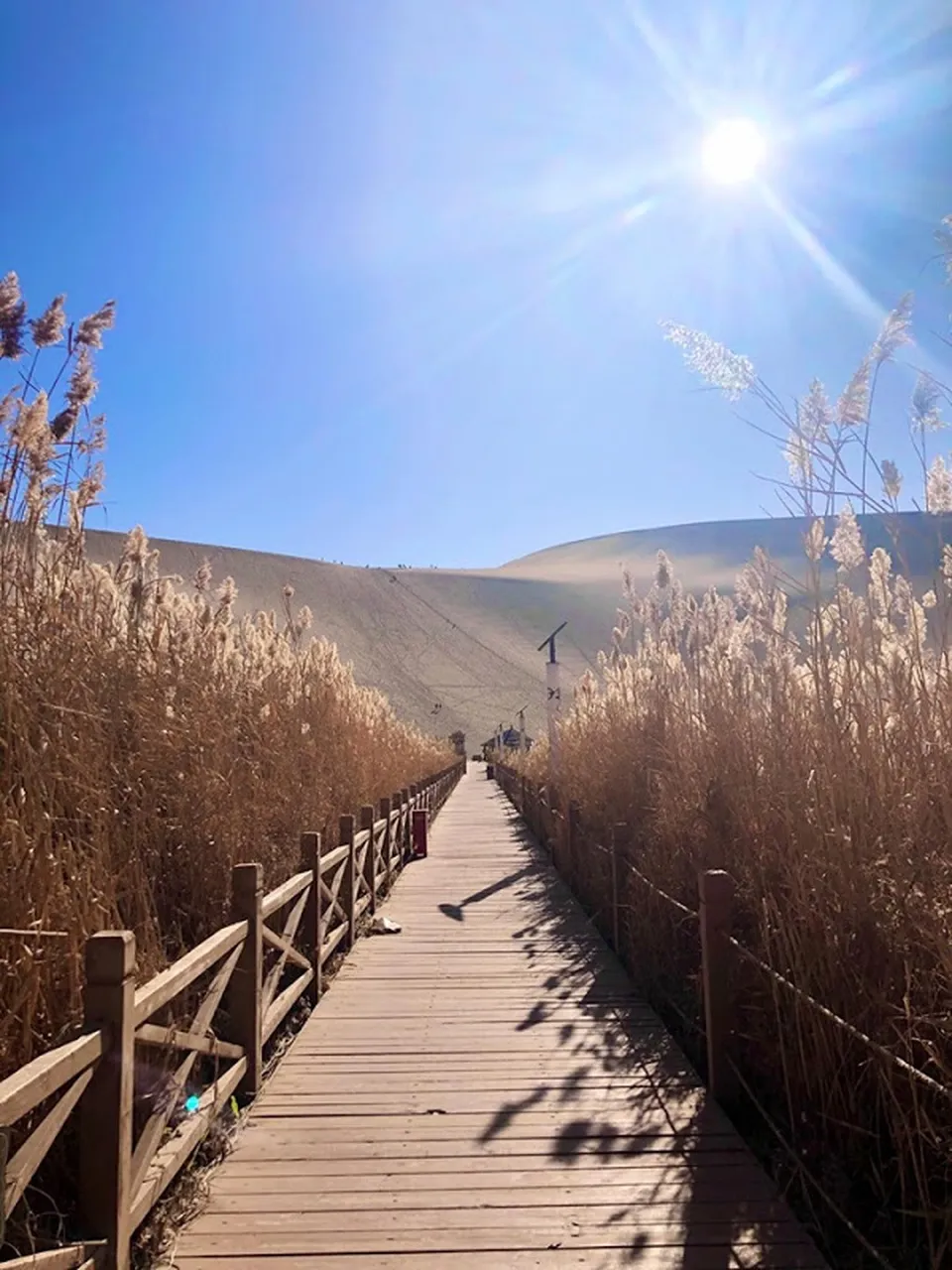

Xinjiang – Mysterious Land with Captivating Beauty
After exploring Gansu and Dunhuang, the journey continues to Xinjiang, the largest and most mysterious autonomous region of China. Xinjiang is not only famous for its magnificent natural landscapes but is also a crossroads of many cultures, offering unique and diverse experiences for visitors.
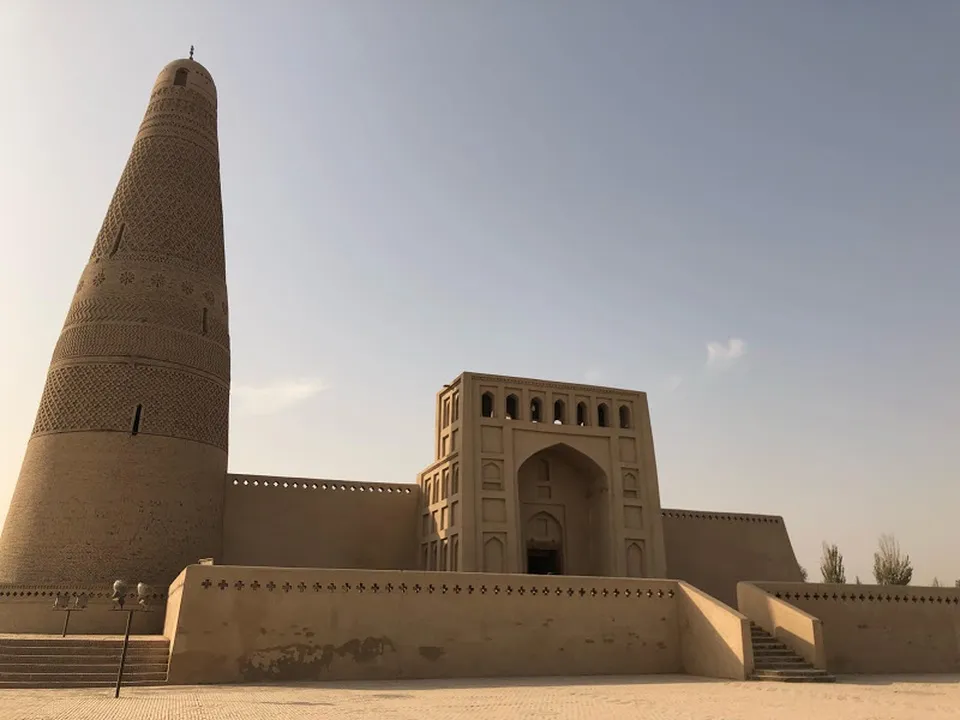
Coming to Xinjiang, you will admire unique Islamic architectural works, explore ancient historical sites, and immerse yourself in the wild natural beauty, from snow-capped mountains to jade-green lakes.
Heavenly Lake – “Paradise on Earth” in the Mortal World
Heavenly Lake, located right in the capital city of Urumqi in Xinjiang, is likened to “paradise on earth” with its picturesque beauty. The blue lake is surrounded by lush pine and cypress forests, vast grasslands, and majestic snow-capped mountains.
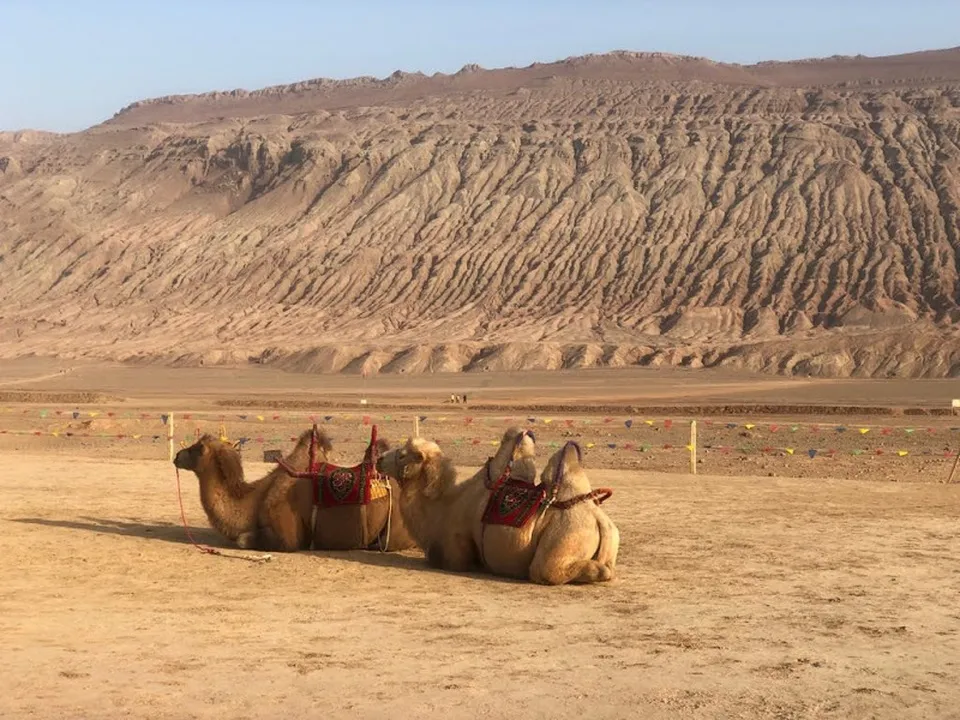
Walking on the wooden paths around the lake, you will enjoy the fresh air, admiring the majestic beauty of the mountains and the blue lake reflecting the sky. Heavenly Lake is an ideal destination for you to find peace of mind and immerse yourself in beautiful nature.

Important Notes for Exploring the Chinese Desert
To have a complete and memorable trip, you need to note a few things:
Visa: The procedure for applying for a Chinese visa is quite simple, you can refer to the instructions on the website of the Chinese Embassy. You should submit your application early to avoid overloading.
Transportation: From Vietnam, you can get to Gansu by air, road, or train. Airplanes and high-speed trains are optimal choices to save time and health. You should book tickets early to get good prices.
Hotels: Hotel prices in Gansu and Xinjiang are quite affordable. 3-star hotels cost about $12 USD/night, 4-5 star hotels about $30-35 USD/night. Note that many hotels and resorts in China still use traditional-style toilets.
Food and Drink: Chinese cuisine is often greasy and spicy. You can learn a few Chinese phrases to ask restaurants to reduce spice and grease. The Xinjiang area mainly serves Muslim food, with no pork, mainly lamb, goat, and beef. You should bring backup food such as instant noodles and dry rations.
Other preparations: The weather in Gansu and Xinjiang is quite dry and cold, especially in autumn and winter. You should bring warm clothes, moisturizer, lip balm, personal medications, and a thermos. You should exchange enough cash because Visa cards are rarely used.
Sample 10 Days 9 Nights Itinerary
Day 1: Hanoi – Guangzhou (afternoon flight, overnight in Guangzhou)
Day 2: Fly Guangzhou – Lanzhou, take high-speed train Lanzhou – Zhangye (overnight in Zhangye)
Day 3: Visit Mati Temple – Zhangye Danxia National Geological Park
Day 4: Conquer Jiayuguan Pass, travel by car to Dunhuang
Day 5: Crescent Lake – Mingsha Desert (camel riding experience)
Day 6: Visit Mogao Caves, travel by high-speed train to Turpan
Day 7: Visit Emin Minaret Mosque – Jiaohe Ancient City – Flaming Mountains
Day 8: Visit Xinjiang Nationalities Museum – Persian Bazaar
Day 9: Visit Heavenly Lake – Xinjiang Night Market
Day 10: Fly Xinjiang – Guangzhou – Hanoi (end of journey)
Conclusion: The journey to explore Gansu and Xinjiang, especially the camel riding experience in the desert, will bring you unforgettable memories and unique cultural experiences. Pack your bags and set off to discover the wild and mysterious beauty of Northwest China right now!